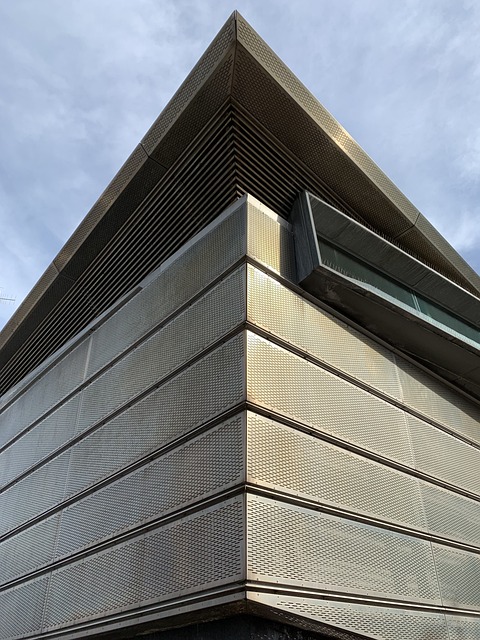Explore Artistic Wonders: Visit an Art Museum Today
Art museums are sanctuaries that celebrate human creativity, culture, and history. They serve as portals to different eras, allowing visitors to engage with art in its various forms—from paintings and sculptures to photographs and installations. With their rich collections, art museums not only enlighten the mind but also nourish the soul, making a visit more than just a visual experience; it becomes a journey through the depths of human expression and emotion.
The Importance of Art Museums
Art museums play a crucial role in preserving our cultural heritage. They house invaluable artworks that tell stories from the past, connecting us with the traditions, values, and struggles of different societies. As custodians of history, these museums ensure that future generations will understand and appreciate the artistic achievements of those who came before them.
Moreover, art museums serve as spaces for education and inspiration. Many institutions offer programs for schools, workshops for families, and lectures from artists, providing a fertile ground for learning and exploration. When people walk through museum halls, they encounter art that challenges their perceptions and stimulates their creativity, prompting them to think beyond the surface of aesthetic enjoyment.
Types of Art Museums
Art museums come in various forms, catering to different interests and preferences. Understanding the types available can help guide your visit and deepen your appreciation of art:
Fine Arts Museums
Fine arts museums typically focus on traditional forms of art, such as painting, sculpture, and drawing. They often feature works from a range of historical periods, allowing visitors to trace the evolution of styles and techniques through time. Notable examples include the Louvre in Paris and the Metropolitan Museum of Art in New York City.
Contemporary Art Museums
Dedicated to modern works, contemporary art museums showcase artists who challenge conventions and explore current themes. Often, their exhibitions are dynamic and experimental, acting as living spaces for creativity. The Museum of Modern Art (MoMA) in New York and the Tate Modern in London are prime examples of this genre.
Sculpture Parks and Outdoor Museums
These unique spaces blend art with nature, featuring large-scale sculptures set against picturesque landscapes. They invite visitors to enjoy art while exploring outdoor environments. Some renowned sculpture parks include Storm King Art Center in New York and the Hirshhorn Museum Sculpture Garden in Washington, D.C.
Specialized Museums
Some art museums focus on specific themes, mediums, or cultural contexts, offering a unique perspective on artistic movements. For instance, the Rijksmuseum in Amsterdam specializes in Dutch art, while the Georgia O’Keeffe Museum in Santa Fe showcases the iconic works of the American artist.
The Experience of Visiting an Art Museum
Walking into an art museum can be a transformative experience. Upon entering, one is often met with a sense of reverence, as the tranquility of the space contrasts with the vibrant energy of the artworks on display. The quiet atmosphere encourages contemplation, allowing visitors to immerse themselves fully in the experience.
As you stroll through the galleries, you may find yourself captivated by a particular piece. Perhaps it is a sublime painting that invokes strong emotions or a thought-provoking installation that invites introspection. Art has the power to speak without words, and every viewer will derive their unique interpretation based on personal experiences and perspectives.
Guided Tours and Educational Programs
Many art museums offer guided tours led by knowledgeable docents. These tours can enrich your visit, providing context and insights into the works and the artists behind them. In addition to tours, educational programs—including lectures, workshops, and artist talks—serve to engage visitors on multiple levels, allowing deeper connections to the art.
Temporary Exhibitions
One of the most exciting aspects of art museums is the rotational nature of their exhibitions. Temporary exhibits, often highlighting specific themes or artists, ensure that each visit can present something new. This constant evolution encourages repeated visits, fostering ongoing engagement with art.
The Social Aspect of Art Museums
Art museums are not just places for solitary reflection; they are also vibrant social hubs. Visiting with friends or family can amplify the experience, encouraging discourse and the sharing of interpretations. Group visits often lead to engaging conversations about the works on display, deepening the connection to the art and the people you’re with.
Many museums host events, such as gallery talks, themed nights, or art fairs, creating opportunities for art enthusiasts and newcomers to engage with one another. These events foster a communal appreciation for art, allowing individuals to bond over shared interests and insights.
Visiting Virtually: A Modern Alternative
For those unable to visit art museums in person, many institutions have embraced technology by offering virtual tours. These digital experiences allow users to navigate the galleries from the comfort of their homes, exploring artworks up close and learning from audio guides or written descriptions. Virtual tours can serve as a wonderful introduction before or after a physical visit, providing context and enriching the understanding of the art.
Preparing for Your Visit
Before heading to an art museum, consider the following tips to enhance your experience:
Researching the Museum
Familiarize yourself with the museum’s collection. Most institutions provide information about their current exhibitions on their websites. Identifying works or artists you wish to see can help you prioritize your time during your visit.
Understanding Museum Etiquette
To preserve the decorum of the space, remember to maintain a respectful demeanor. Speak softly, avoid using flash photography, and do not touch the artworks unless specifically allowed. These simple practices contribute to an environment where everyone can enjoy and appreciate the art.
Considering a Guided Tour
If available, consider joining a guided tour. Not only will you receive insights into the works on display, but you will also benefit from the knowledge of the guide, including stories and historical context that enhance your understanding of the art.
The Lasting Impact of Art Museums
The experience of visiting an art museum leaves a lasting impression. The ability of art to provoke thought, inspire creativity, and evoke emotion cannot be overstated. In a world filled with hurry and distraction, art museums provide a sanctuary for introspection and connection—to ourselves, to history, and to one another.
Whether you are an experienced art aficionado or a casual observer, a visit to an art museum offers an invaluable opportunity to explore artistic wonders. Each artwork has a story to tell, and every visit is a chance to engage with the myriad expressions of the human experience. So why wait? Plan your visit today and embark on a journey that promises to enrich your understanding of art and its place in our world.


